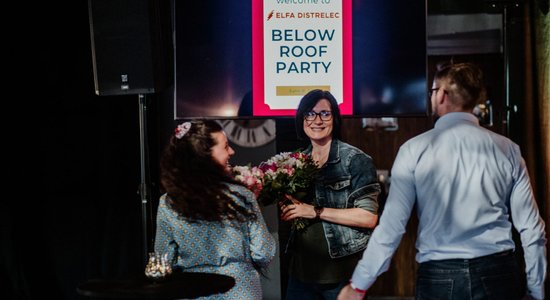
Rundāle Castle
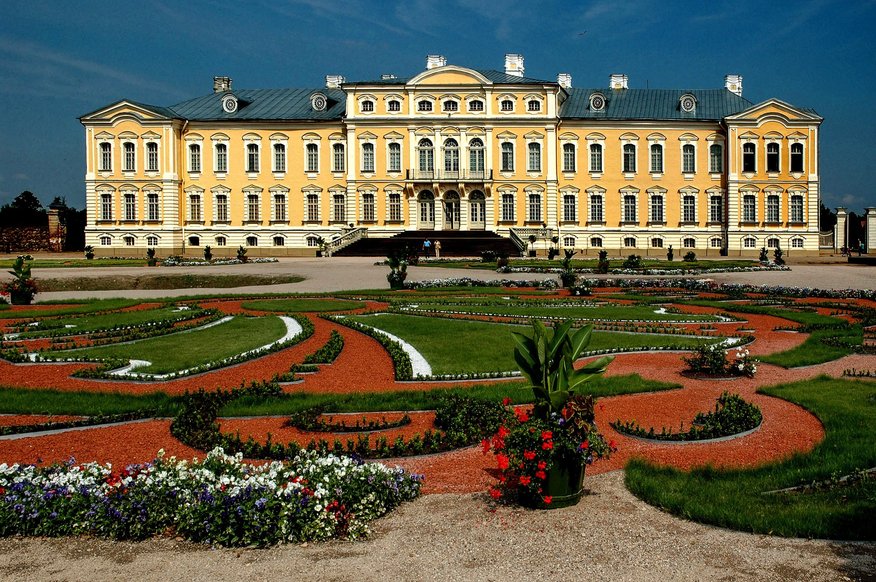
"Located in Pilsrundāle, Rundāle county. An amazing, unique, perfectly renovated castle in countryside surroundings, with a rich interior and park which should be visited in every season more than once," says Maņovskis of Latvia's most famous castle.
Rundāle Castle is one of Latvia's greatest architectural monuments which needs no advertisement, a significant Baroque-era castle complex with the castle, stables and park. The castle was built as the summer residence of Ernst Johann von Biron, Duke of Courland and a favourite of Russian Empress Anna Ivanovna.
It was built between 1736 and 1740 and designed by famous Russian court architect Francesco Bartolomeo Rastrelli. The castle complex rises from the flat, untouched Zemgale landscape, thus maintaining its architect's intention: the castle stands at the centre over everything as a symbol of the ruler's might, and from which avenues spread out to the horizon.
Since 2019, the castle has been managed by Laura Lūse. In an interview with Delfi, she explained: "We have a wonderful castle with a historically appropriate interior reflecting von Biron's period; we also have an exhibition dedicated to historical art styles, including example objects from these styles, which acts as a visual art museum. We have an exhibition of sacred art, as well as a corner of everyday life at the castle, an equipped kitchen, and a park with a rose garden and well-maintained territory. This is something which certainly needs to be maintained to continue—not just maintenance, but also further developing the territory. As Rundāle has a large territory, we have grand plans." Read the full interview with the new castle museum director about its future here.
Durbe Castle
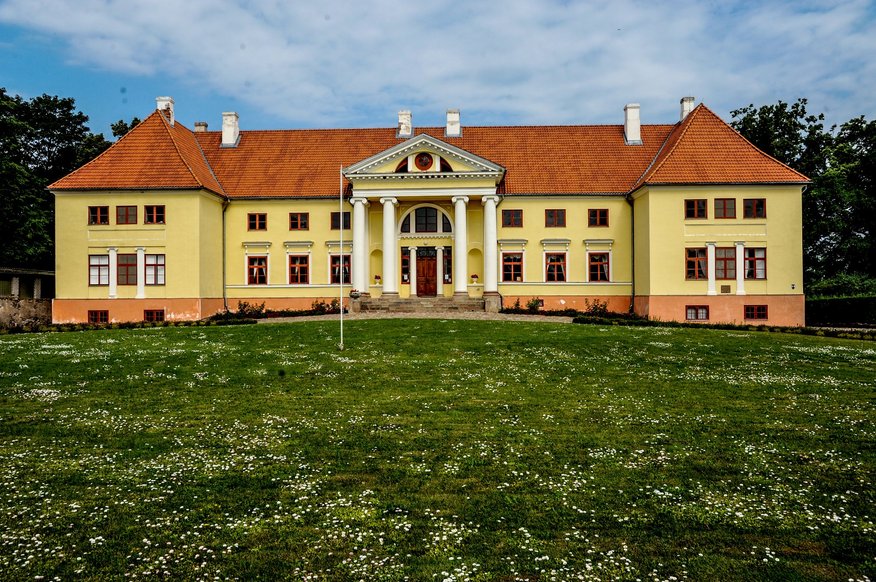
"Located in Tukums. The castle has been restored to a high quality with appropriate furniture, and the park contains a rotunda and a bridge over the ravine. At one time, the castle was given to Rainis as a summer residence," explains the author of the encyclopedia.
This is one of the most interesting examples of classicism in Kurzeme. Currently, the renovated castle exhibition rooms have been furnished with a 19th century country manor interior. The Durbe Park was landscaped between 1818 and 1838, when Count Medem rebuilt Durbe Castle and landscaped its surroundings.
The park is modelled after English landscape parks, with large groups of trees alternating with smaller copses and single trees. Along with its small ponds, uneven landscape and winding network of paths along its expansive lawns—with the castle as the centrepiece—the park forms an unforgettable landscape. The park was planted with trees brought from Siberia and Germany. It also contains Latvia's widest pine tree, an eastern white pine (Pinus strobus L.), which has a circumference of 3.18 metres.
More information: www.tukumamuzejs.lv
Mežotne Castle
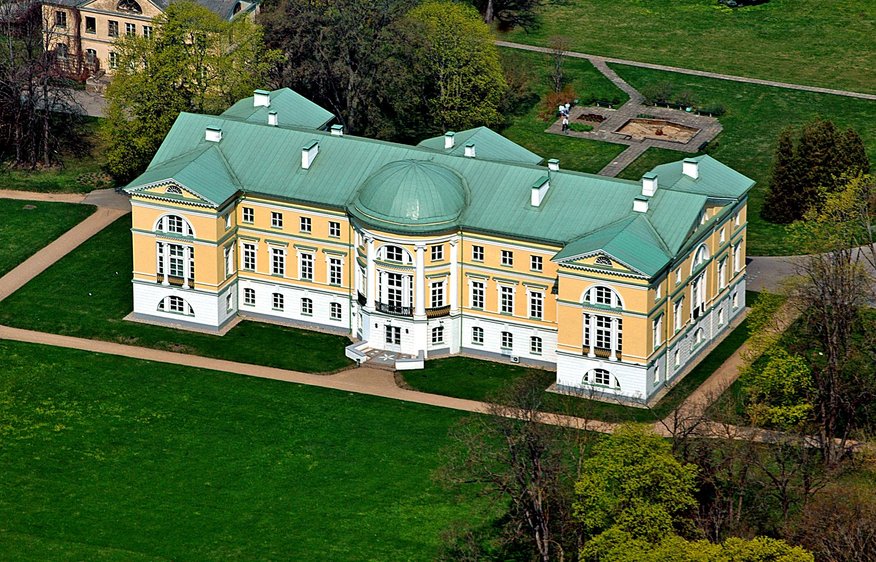
"Located in Mežotne, Mežotne parish, Bauska county. It was built by Johann Georg Adam Berlitz (1798-1802) after a sketch by Italian architect Giacomo Quarenghi. It has an expressive interior and a well-kept park which is particularly beautiful in the autumn," explains Vitolds Mašnovskis.
From 1797 to 1920, Mežotne was the family estate of the Lievens.
Nearby are the former manor buildings: a servants' house, stables, the overseer's house and a barn.
Nurmuiža
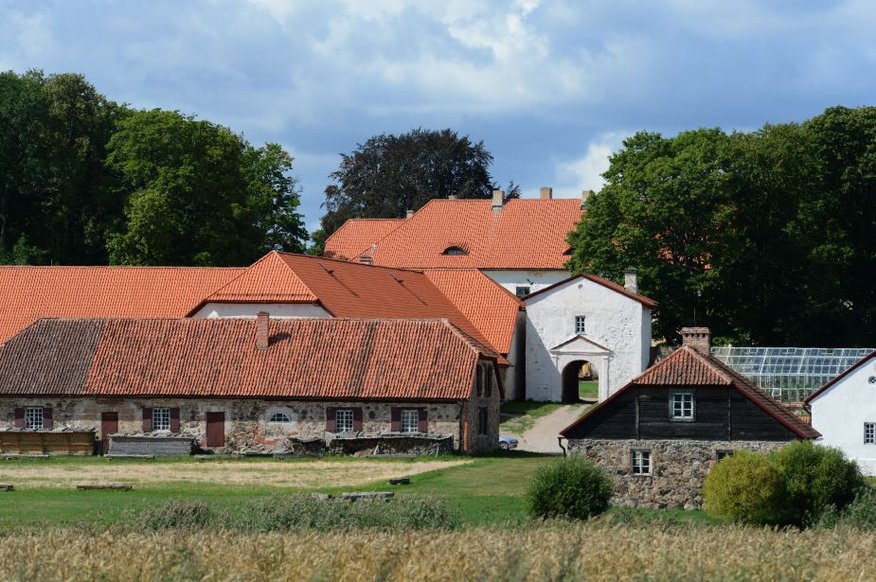
The manor belonging to Oļegs Fiļs is in Talsi county, Lauciene parish. One of the largest manor complexes in Latvia, it is being restored to a high quality with great consideration.
The manor was built in the second half of the 16th century. It is thought that Nurmuiža may have been built on the site of an older vassal's castle. "It was rebuilt at the end of the 17th century, in the 1830s, the 1880s, and 1909-1912 by architect Wilhelm Bockslaff," according to Talsi tourism website Talsitourism.lv.
The interiors of the manor are seen as one of the most effective examples of a Neoclassical interior in Latvian castles.
More information here.
Abgunste Manor
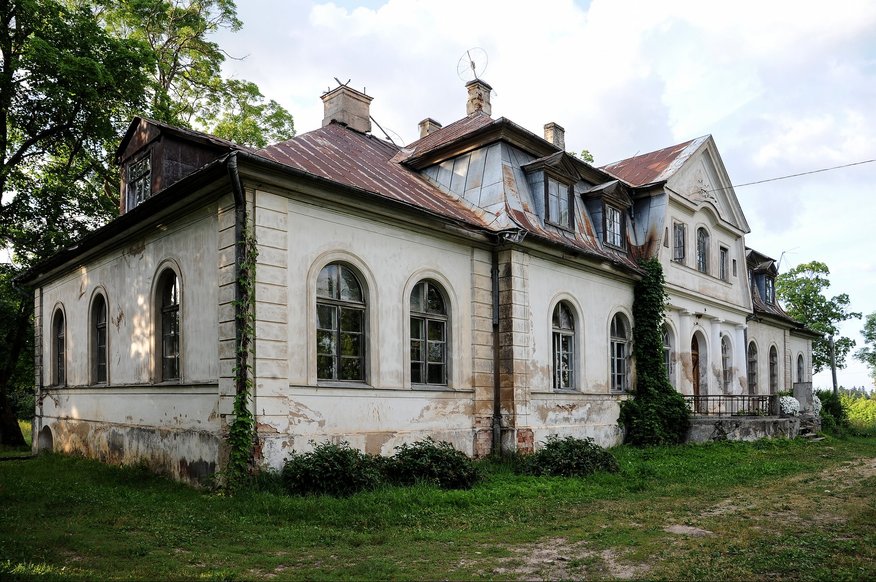
Located in Jelgava county, Zeļenieki parish. "The main house is being renovated with enormous patience, and, thanks to seven cats and a group of friends, is becoming a serious cultural centre," explains Mašnovskis, recommending a visit there.
This manor dates back to 1780. At that time, it belonged to the von der Pahlen family and was used as a hunting lodge and summer residence. The buildings were made of wood and were sadly burnt to the ground in 1905 by revolutionaries. Only the vaulted stone cellars remain from this time, where the current new owners are gradually installing artist workshops—a residency centre. As Jānis Avotnieks explains, artists will be able to live and work there for free; they will hold workshops and create wonderful things.
Berķene Manor
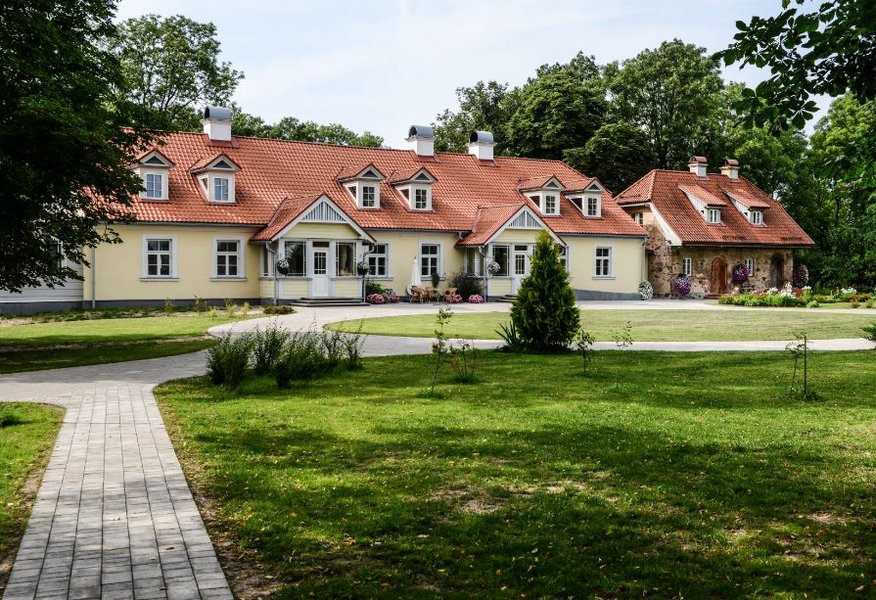
Berķene Manor is located in Ziedkalne, Vilce parish, Jelgava county. "The manor complex—particularly known for its main house with elegant interiors—is being carefully renovated from ruins with exquisite taste," says the manor expert of Berķene.
Lielberķene Manor, as an estate, is one of the oldest small manors in Zemgale. It belonged to the Medem family until 1694, before changing hands several times—it was sold, pawned and even gambled away. The main house remains today; it was built in 1819 in an early Classicism style during the time of von Butlar.
Kaucminde Manor and House

Kaucminde Manor is in Rundāle parish. "It is one of the most architecturally interesting in Latvia, built in a semicircle in a Historicist style with a decorative roof which has been often destroyed barbarically and very successfully. The castle is famous for its housekeeping seminar in the early 20th century," explains Mašnovskis sadly.
We previously wrote about how the grand manor is falling into ruin and has become dangerous for visitors. More on the history of the manor and how it looks now
here (in Latvian).
Jaunauce Manor and Castle
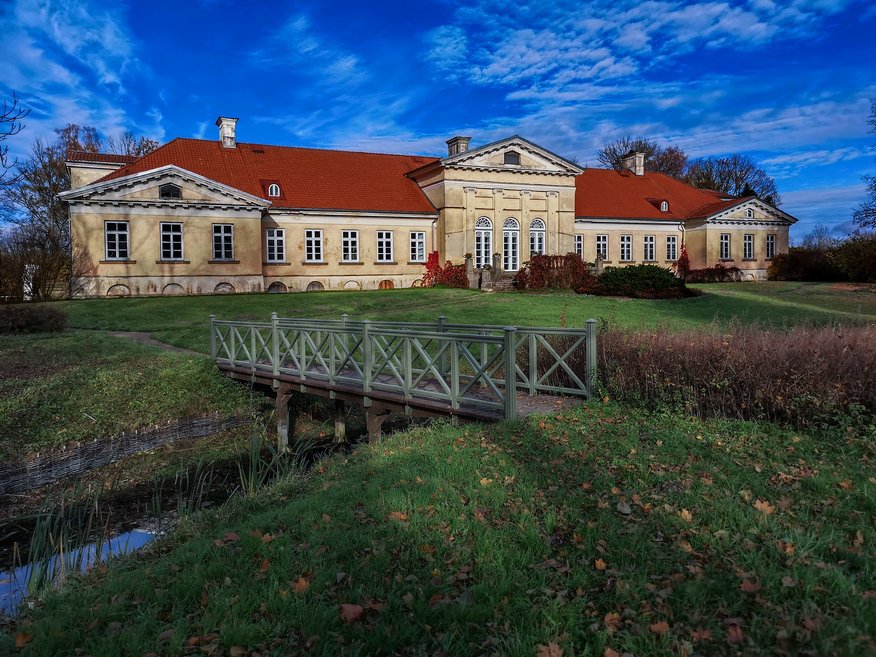
Jaunauce Manor is in Saldus county, Jaunauce parish. It has a manor house with valuable interiors and many beautiful ceramic stoves and fireplaces which are being very carefully renovated. The renovated park is also lovely.
Jaunauce Castle tells its visitors two stories: one about the time when it was the family home of Baron von der Ropp and the location of a calm family life for 100 years, and another about the time when the castle was home to Jaunauce school for 80 years. Both stories are rich with larger and smaller events, and the fates of many people.
The main house of Jaunauce Manor was built at the start of the 19th century in an Empire style for Count Medem. At the start of the 20th century, architect Max Alexander von der Ropp renovated the interiors.
The building has maintained a late Classicism interior, the largest collection of early 19th century stoves, and Latvia's only authentic Classical cupola painting. The manor is surrounded by a 7.7 hectare landscape park with many exotic trees and shrubs, and which also contains an unusual pond and canal, and even a renovated tennis court from when the manor was built.
Bīriņi Castle
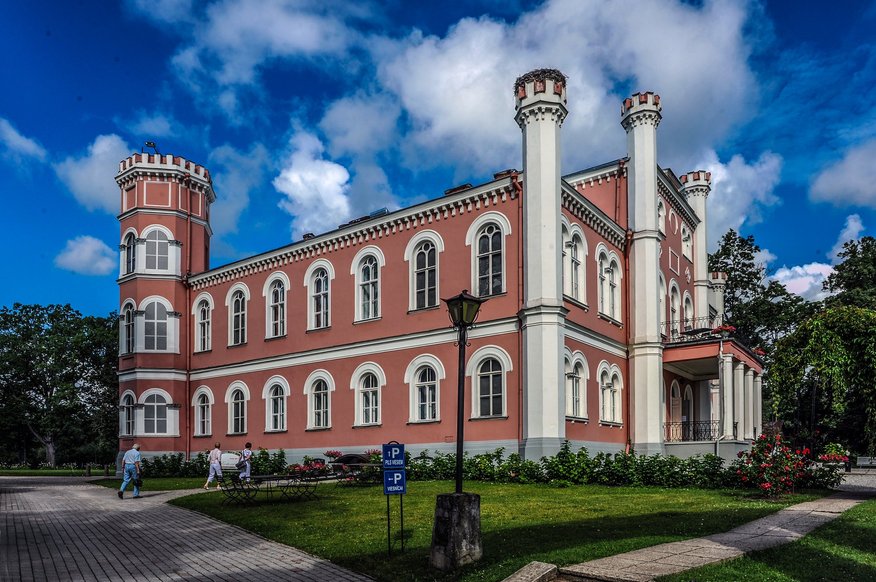
Located in Bīriņi, Vidriži parish, Limbaži county. The harmonic manor complex, which is unusual for its eclectic mix of Romanesque, Gothic and Renaissance styles, is centred around a red brick castle and includes a park, according to Mašnovskis.
The castle is located in Limbaži county, Vidriž parish. It was very finely designed by Riga architect Friedrich Wilhelm Heß (1822-1877). In 1870, a road to Saulkrasti (Neibad), where a new resort was developing, was built. Interestingly, the castle in those days was so grand and unusual that the facade had to be simplified at the start of the 20th century by architect R.H. Cirkvics, according to website Ambermarks.
In 1926, the Riga Book Manufacturer Health Insurance Fund installed a sanatorium called Grāmatnieki in the castle. Since then, until 1995, the castle was used for medical institutions. During the Soviet occupation, the interiors were "decorated" with pictures reflecting their ideology.
The castle and park have now been renovated, and are privately owned.
Of interest is the Bīriņi Castle water tower, built at the end of the 19th century where a well previously stood. Wind power was used to pump water from the well to supply the whole castle. The park is a pleasant place for walks both in the summer and winter.
Jaunmoku Castle
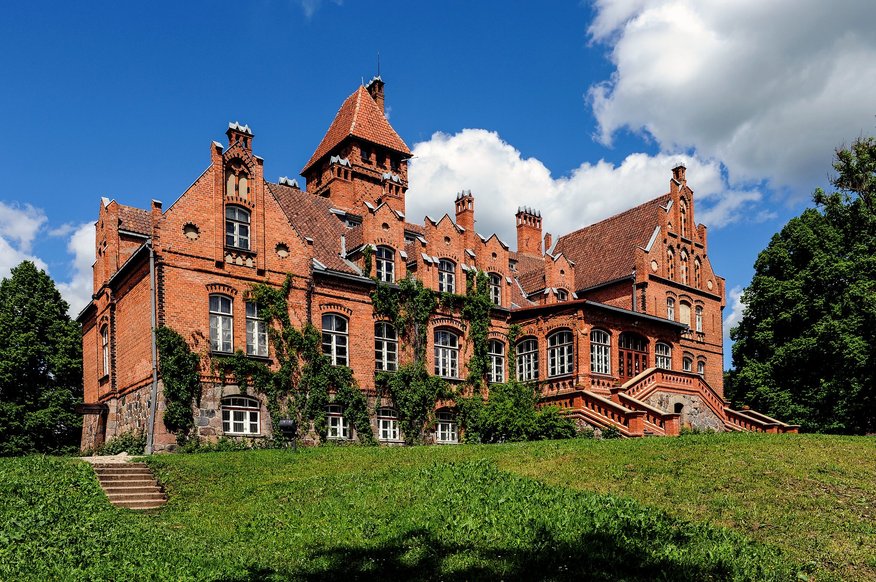
"Located in Tukums county, Tume parish. The impressive, red brick Historicist castle includes Neogothic, Art Nouveau and other elements, forming a wonderful architectural ensemble. Included as part of the castle interiors are several ceramic stoves installed during the time of Armitstead and Brinken by the company Celma un Bēma, some of which survive today," explains the author.
Jaunmoku Castle was built in 1901 as the family summer residence and hunting lodge of George Armitstead (the British Mayor of Riga whose statue with his dog can be see in Riga on the banks of the canal). It contains wonderfully beautiful objects and fine details uncharacteristic of Latvia.
Wilhelm Ludwig Nikolai Bockslaff was a Riga-born Baltic German architect. He designed several famous buildings and castles in Latvia. Armitstead, who had collaborated with the architect in developing Riga, entrusted the design of his castle to this famous professional, which he wanted built on a hilltop in the picturesque surroundings near Tukums.



